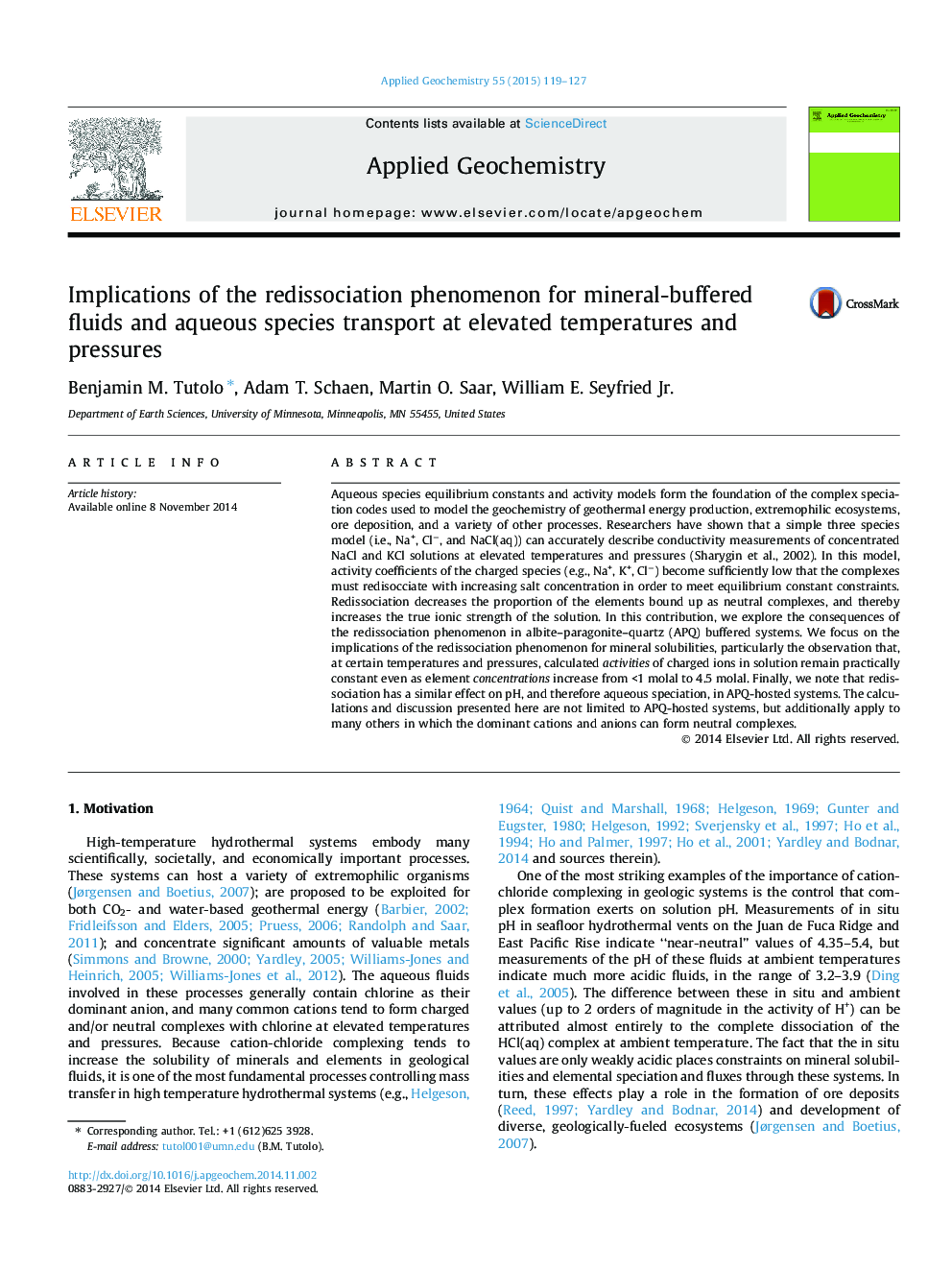| Article ID | Journal | Published Year | Pages | File Type |
|---|---|---|---|---|
| 6335202 | Applied Geochemistry | 2015 | 9 Pages |
Abstract
Aqueous species equilibrium constants and activity models form the foundation of the complex speciation codes used to model the geochemistry of geothermal energy production, extremophilic ecosystems, ore deposition, and a variety of other processes. Researchers have shown that a simple three species model (i.e., Na+, Clâ, and NaCl(aq)) can accurately describe conductivity measurements of concentrated NaCl and KCl solutions at elevated temperatures and pressures (Sharygin et al., 2002). In this model, activity coefficients of the charged species (e.g., Na+, K+, Clâ) become sufficiently low that the complexes must redisocciate with increasing salt concentration in order to meet equilibrium constant constraints. Redissociation decreases the proportion of the elements bound up as neutral complexes, and thereby increases the true ionic strength of the solution. In this contribution, we explore the consequences of the redissociation phenomenon in albite-paragonite-quartz (APQ) buffered systems. We focus on the implications of the redissociation phenomenon for mineral solubilities, particularly the observation that, at certain temperatures and pressures, calculated activities of charged ions in solution remain practically constant even as element concentrations increase from <1Â molal to 4.5Â molal. Finally, we note that redissociation has a similar effect on pH, and therefore aqueous speciation, in APQ-hosted systems. The calculations and discussion presented here are not limited to APQ-hosted systems, but additionally apply to many others in which the dominant cations and anions can form neutral complexes.
Related Topics
Physical Sciences and Engineering
Earth and Planetary Sciences
Geochemistry and Petrology
Authors
Benjamin M. Tutolo, Adam T. Schaen, Martin O. Saar, William E. Jr.,
